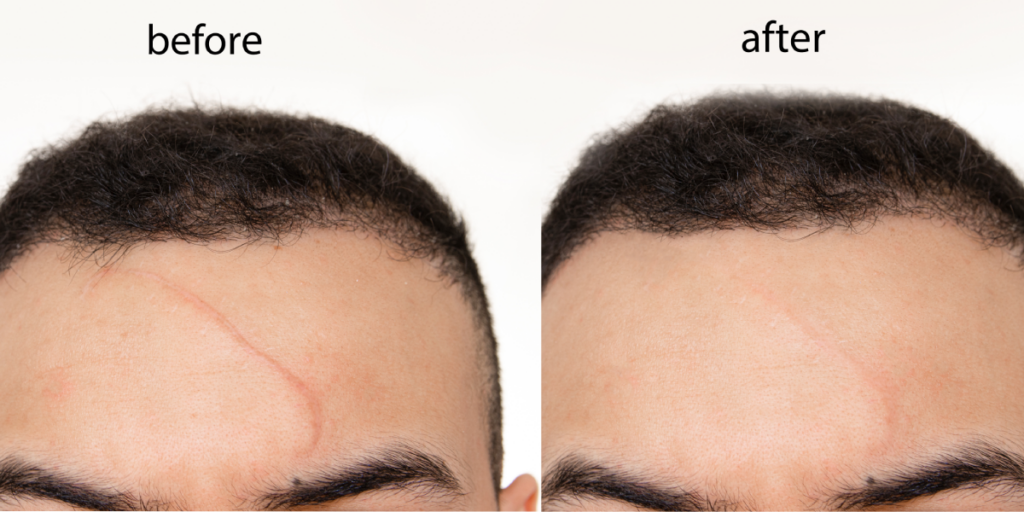
Scar revision is a medical procedure aimed at enhancing the appearance of scars. Scars, resulting from surgery, injury, or other incidents, can impact physical appearance and self-confidence. Individuals can explore various options for reducing their scars’ visibility by delving into the fundamentals of scar revision. Scar revision techniques can address a range of scar types, including keloid, hypertrophic, and contracture scars. Each type has unique characteristics and requires different approaches for effective treatment. Understanding the basics of these methods enables individuals to make informed decisions and pursue the most suitable treatments to achieve smoother and less noticeable skin.
Varieties of Scars and Their Features
Scars can take on various forms, each with distinct characteristics. Keloid scars are raised and extend beyond the original injury site, often resulting from an overproduction of collagen. Hypertrophic scars are also raised but stay within the boundary of the injury. They can be red and thick but may improve over time. Contracture scars, often resulting from burns, cause the skin to tighten, which can limit movement in affected areas. Common causes of these scars include surgery, accidents, or skin conditions, and they can have different impacts on the skin, ranging from mild discoloration to significant structural changes.
Techniques for Scar Revision
Both surgical and non-surgical techniques are available when looking at improving scars. Surgical methods might include excision, where the scar is cut out and the surrounding skin is stitched together, or skin grafts, where skin from another body area is used to cover the scarred area. Flap surgery is another option that involves repositioning skin and tissue to cover the scar. Non-surgical methods can include dermabrasion, a technique that sands down the skin to make scars less visible. Steroid injections can help flatten raised scars and reduce redness. The choice of method depends on factors like the scar’s size, location, and type, as well as the patient’s health and goals. Each technique has benefits and may be more suited to specific scars. For example, keloid scars may respond well to steroid injections, while contracture scars might require surgical intervention for the best results. Discuss all options with a specialist to determine the most effective treatment plan.
Anticipations for the Procedure
During the initial consultation, the specialist will review your medical history and assess your scar to determine the best approach for revision. Preparation might include stopping certain medications, avoiding smoking, and using specific skincare products to optimize skin condition. On the day of the procedure, measures are taken to ensure your comfort, which may involve local or general anesthesia depending on the technique used.
For surgical methods, the procedure could last from an hour to several hours based on the complexity and size of the scar. Non-surgical options, like steroid injections, are typically quicker. After the procedure, it is common to experience swelling, redness, or minor discomfort. These symptoms usually diminish as the skin heals.
Your specialist will provide detailed aftercare instructions to promote healing and achieve the best results. These may include keeping the area moisturized, avoiding sun exposure, and adhering to any prescribed skincare routines. You might be given specific guidelines on activity levels to ensure optimal recovery. Adhering to these instructions can significantly impact the effectiveness of the scar revision, helping you achieve smoother and less visible scars over time.
Healing and Post-Procedure Care
Proper aftercare is vital to ensure optimal healing following scar revision. Patients are usually advised to keep the treated area clean and moisturized to prevent infection and promote skin recovery. Avoiding direct sunlight is essential, as UV exposure can darken scars and hinder the healing process. Specialists often recommend using sunscreen on the scarred area if sun exposure is unavoidable.
Activity levels need to be adjusted based on the extent of the procedure. Patients should avoid strenuous activities that could strain the treated area, particularly if it is in a location prone to movement, such as joints. Gentle, gradual movements are generally encouraged to maintain flexibility without causing stress to the healing tissue.
It’s also important to adhere to any prescribed skincare routines, which might include specific creams or ointments designed to aid the healing process and improve scar appearance. Regular follow-up appointments with your specialist will allow for monitoring of the healing progress and early detection of any potential complications.
Patients should be aware that healing timelines can vary. Most will see improvements within a few weeks to months, though individual factors such as skin type, the extent of the revision, and overall health can influence recovery speed. By diligently following aftercare instructions, patients can enhance the success of their scar revision treatment.
Selecting a Competent Specialist
Selecting the right specialist for scar revision is essential to achieving optimal outcomes. It’s important to evaluate the specialist’s experience, ensuring they have a robust background in various scar revision techniques. Certification is another critical factor; look for board-certified plastic surgeons who have completed rigorous training and adhere to high standards of care. Patient reviews and testimonials can provide insights into the specialist’s reputation and patient satisfaction. Queen City Plastic Surgery stands out as a reputable choice, offering skilled professionals who are well-versed in surgical and non-surgical scar treatments. A consultation can help you assess their approach and determine if it aligns with your specific needs and goals. With the right specialist, you can feel confident in your path toward achieving smoother, more aesthetically pleasing skin.
For More Information
Are you ready to transform your appearance? If so, you are in good hands with “Charlotte Top Doc”, Dr. Enam Haque. To book a consultation for any of your skincare or plastic surgery questions, contact the offices of Queen City Plastic Surgery at 704-859-2449 or use our simple online form. Our conveniently located Charlotte office welcomes patients from throughout the region and country.
